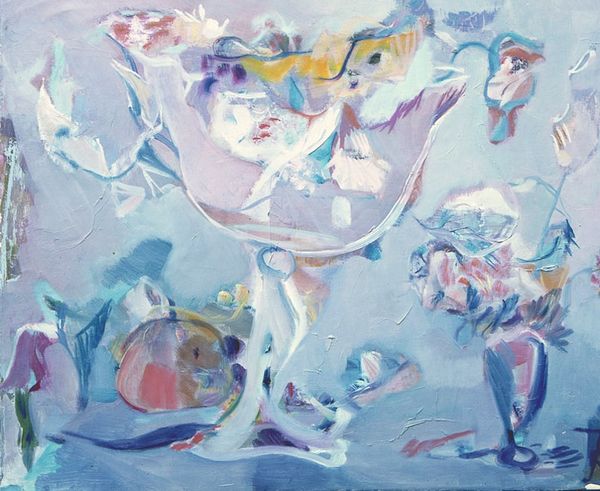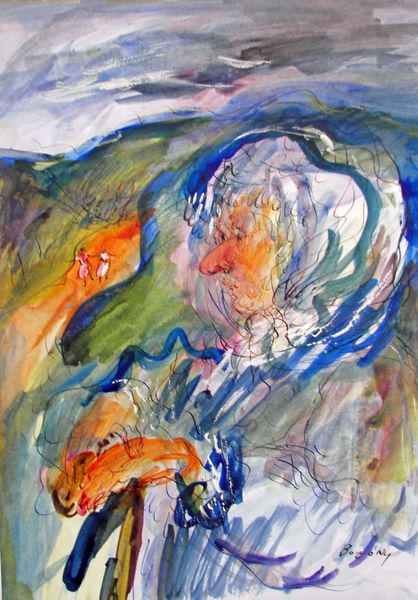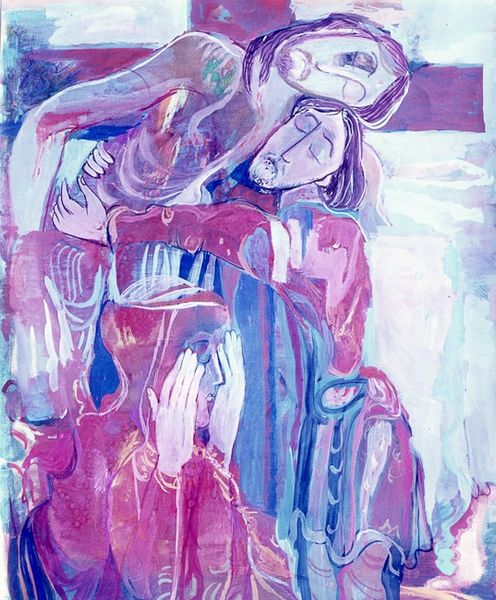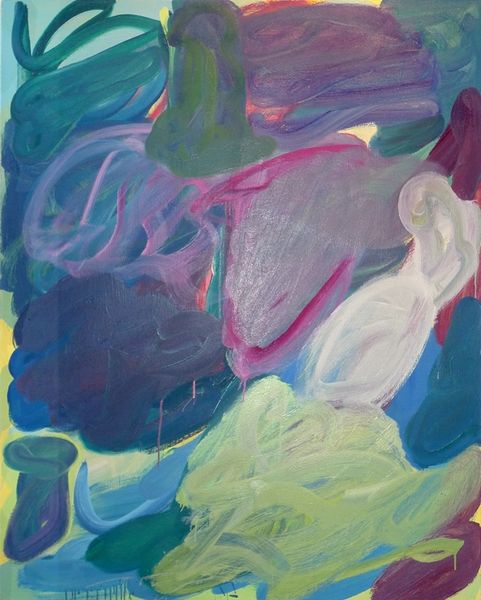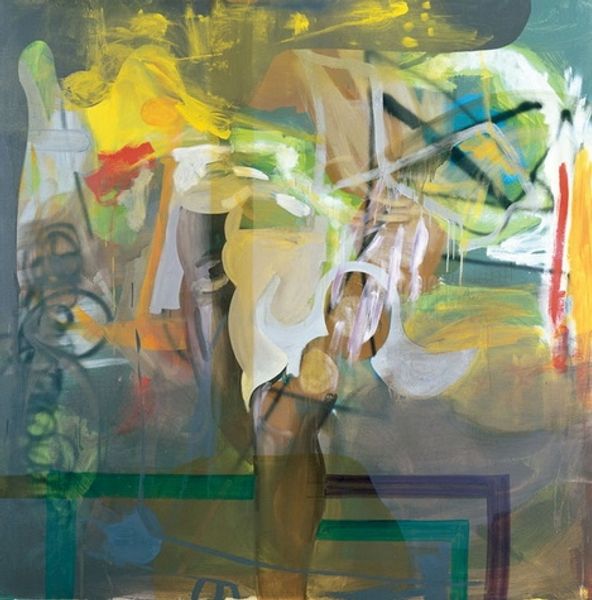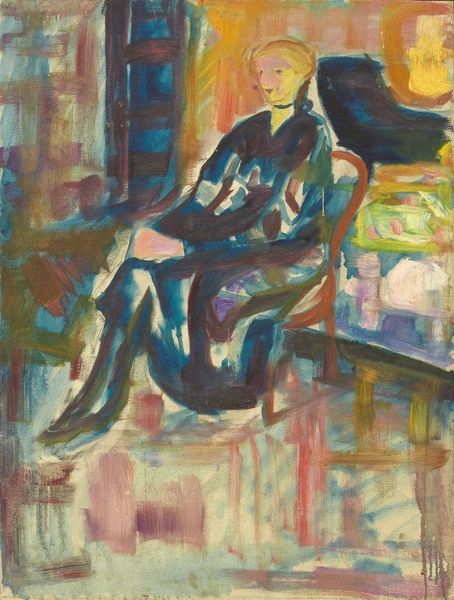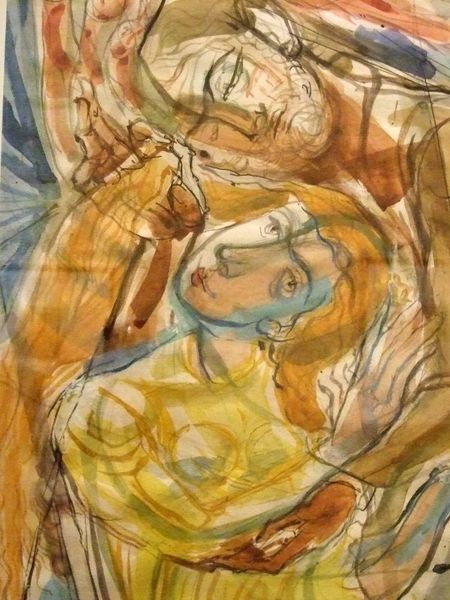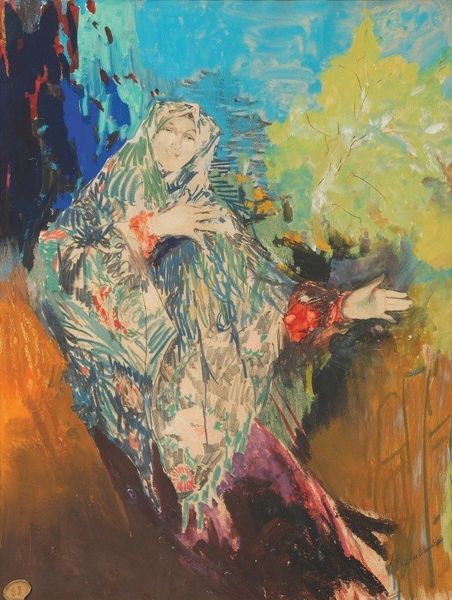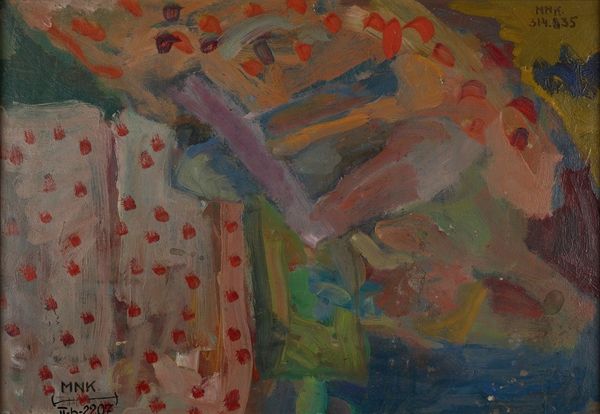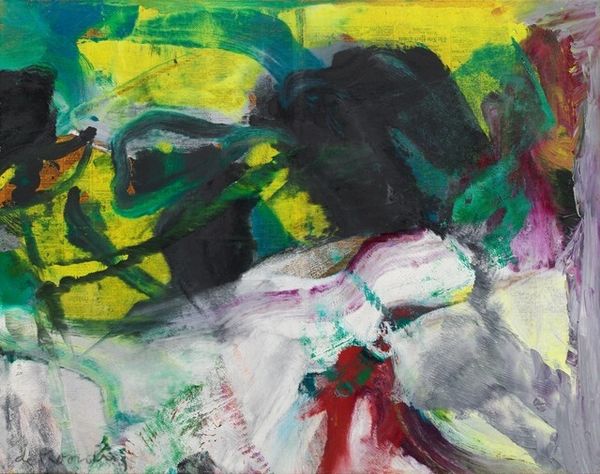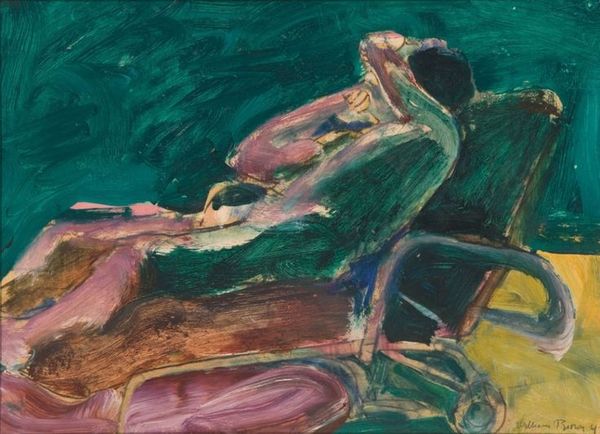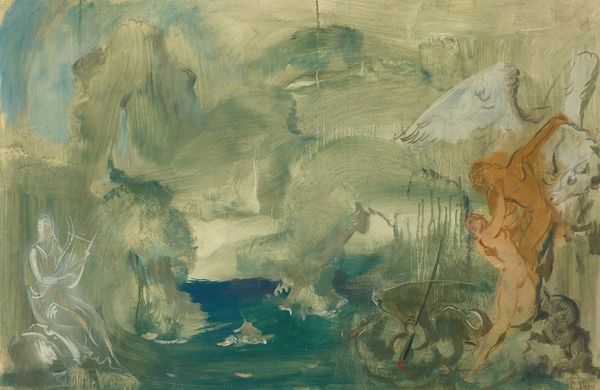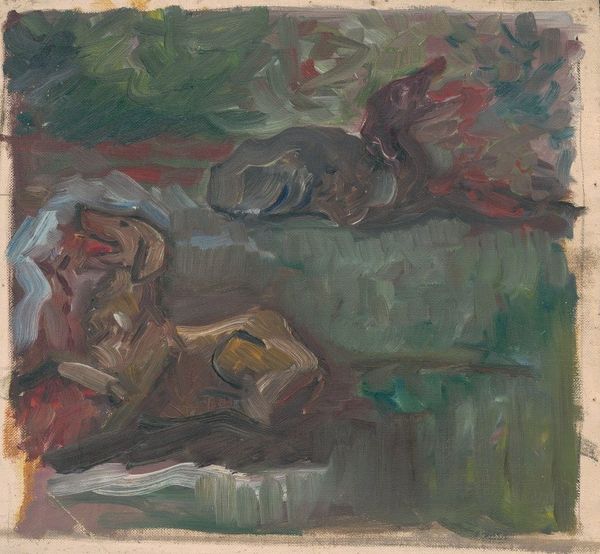
Copyright: Public Domain: Artvee
Curator: I’m struck by the sheer immediacy of this image. Editor: Indeed. We're looking at Edvard Munch's "Women in the Bath," created in 1917 using oil on canvas. What draws you in first? Curator: It's the convergence of raw vulnerability and domestic ritual. These women bathing transcend the everyday; they represent, perhaps, a communal subconscious or a shared understanding of self and femininity through exposure. There’s a Fauvist wildness about it too, in the coloration. Editor: You know, it's the application of paint itself that grabs my attention. See how Munch manipulates the oil to achieve this layered effect. There’s visible brushwork and transparency creating this palpable tension on the surface. It reflects perhaps something about how labor and process, the gestures involved, contribute meaning here – as though the material fights against resolution or traditional form. Curator: Interesting. Given the context, post-World War I, one might even interpret the scene as a visual manifestation of social anxiety and shared female experience. Munch often explored themes of anguish. Are the red undertones a psychological indicator? Editor: The red certainly provides an emotional grounding for it all. Speaking materially, the relative availability of different pigments must have guided some of these choices. And it all emphasizes the corporeal: look how the blue hues at the lower portion mimic, and thus materialize, the sense of actual submersion. Curator: Yes! Color choices, intentional or accidental, evoke very primal connections between water, body, and emotions. But the arrangement—these obscured or semi-obscured figures bathing—can be also interpreted as a metaphor for society, for hidden realities, for shared experiences both beautiful and burdened by cultural anxieties. Editor: Exactly, so to recap, it's a wonderful glimpse into art-making as both concept and physical undertaking... Curator: ...Revealing cultural history through emotion.
Comments
No comments
Be the first to comment and join the conversation on the ultimate creative platform.
